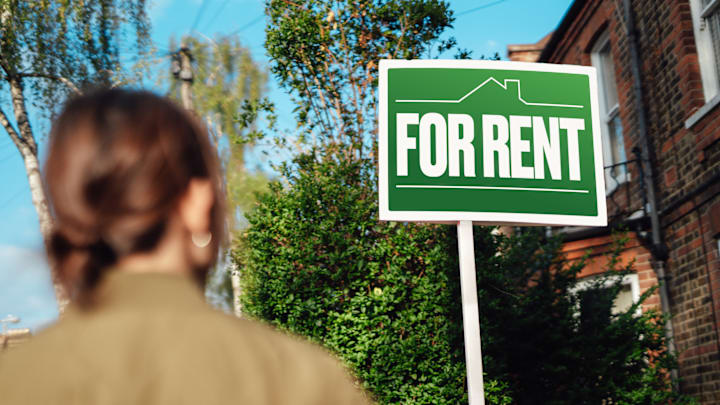The economy might be booming, but that’s not good news for renters. Year over year, the costs associated with leasing property have steadily risen. Some estimates peg it at 32 percent over pre-pandemic levels, with an average rate of $1958 per month at the beginning of 2024. (That’s still often cheaper than buying, as limited supply, high prices, and soaring mortgage rates have made homeownership unaffordable for many.)
While times are tough all over, renting is especially painful in some places. Recently, information hub Visual Capitalist highlighted the 10 most expensive cities to rent a one-bedroom apartment. Their findings:
- New York, NY // $4200
- Jersey City, NJ // $3300
- San Francisco, CA // $2950
- Boston, MA // $2830
- Miami, FL // $2770
- San Jose, CA // $2570
- Arlington, VA // $2380
- San Diego, CA // $2370
- Washington, D.C. // $2300
- Los Angeles, CA // $2300
The top two most financially challenging cities on the list—New York, NY, and Jersey City, NJ—well outpace the rest, and have even posted appreciable year-over-year bumps, with NYC rents going up 11.1 percent. Nor will the city get any immediate relief: On June 17, the city’s Rent Guidelines Board approved a 2.75 percent increase in rent-controlled units for single-year leases as protestors milled about outside their building.
Not surprisingly, four California cities—San Francisco, San Jose, San Diego, and Los Angeles—make up virtually half the list, though rent in L.A. is still almost half that of New York City. And a handful of cities—like Miami, FL, and Washington, D.C.—actually saw rent averages drop slightly from the previous year.
How Renters Are Dealing With Price Increases
Overall, rent appears to be running well ahead of wage hikes. Though rental costs are nearly a third higher than in 2019, wages rose just 20.2 percent in the same period. That’s part of the reason Americans are reporting being severely overextended. A 2024 Harvard Joint Center for Housing Studies report found that 22.4 million renter households were spending over the recommended 30 percent of their income on housing expenses.
There’s no short-term solution pending, either. New construction slowed considerably during the pandemic, contributing to the supply-and-demand problem for buyers and renters. Though some novel ideas are gaining traction—like build-to-rent communities that offer new homes for leased occupancy—the fact that more people want housing units than are available continues to create problems.
Some tenants are taking it upon themselves to cap rental increases. Writing for CNET, Katherine Watt recommends trying to negotiate with landlords at lease renewals by alerting them if proposed increases are outpacing inflation and relying on a solid history of problem-free occupancy.
Lawmakers at state and federal levels are floating ideas like rent increase caps and eviction protection. But housing will likely continue to be a primary pain point for millions of rental dwellers for some time to come.
